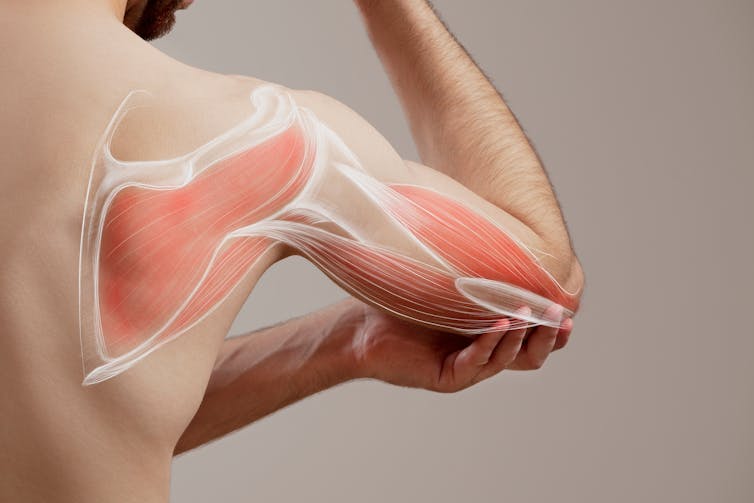Source: The Conversation – UK – By Siobhan Mclernon, UCL Stroke Research Centre, Department for Brain repair and rehabilitation. Senior Lecturer, Adult Nursing and co-lead, Ageing, Acute and Long Term Conditions, London South Bank University
Stroke is one of the leading causes of disability worldwide. It places a huge burden on families, health systems and societies. Increasingly, strokes are not just occurring in older adults. They are affecting younger people in the most productive years of their lives, interrupting work, family life and long-term wellbeing.
In the US, around 55,000 more women than men experience a stroke each year. This is partly because women live longer. However, women also tend to have poorer outcomes and a lower quality of life after a stroke. Globally, stroke is more common in women than men under the age of 25.
Stroke risk in women is shaped by biology and hormones throughout the reproductive years.
One important set of risk factors involves high blood pressure during pregnancy. These include conditions such as gestational hypertension and preeclampsia.
Preeclampsia usually develops after 20 weeks and involves high blood pressure alongside organ damage, often affecting the kidneys or liver. These conditions increase the risk of stroke both during pregnancy and later in life because high blood pressure can injure the blood vessels that supply the brain.
Hormonal contraceptive use can also influence stroke risk. Not all hormonal contraception increases the risk. The main concern relates to combined oral contraceptives that contain both oestrogen and progesterone. These can make blood more likely to clot and raise blood pressure.
The risk is higher in women who smoke, are over 35 or have migraines with aura. Progesterone only methods are not linked to the same level of risk. Around 248 million women worldwide use hormonal contraception according to the World Health Organization.
Read more:
Birth control increases stroke risk – here’s what women need to know
Menopause is another important factor. During menopause, oestrogen levels fall. Oestrogen normally helps protect blood vessel walls and supports healthy cholesterol levels. When oestrogen declines, blood vessels can become stiffer and more prone to damage, which increases stroke risk.
Hormone replacement therapy, or HRT, is sometimes used to treat menopausal symptoms. Some forms of HRT, particularly those containing oestrogen, have been linked to a small increase in stroke risk, especially in older women or those who start HRT many years after menopause.
Women are also more likely to experience migraines, particularly migraines with aura. This type of migraine is associated with temporary disruptions to blood flow in the brain, which can increase the risk of stroke.
Autoimmune diseases, such as lupus and rheumatoid arthritis, are more common in women and can cause chronic inflammation. Inflammation contributes to the narrowing and weakening of blood vessels, making stroke more likely.
Read more:
Women get far more migraines than men – a neurologist explains why, and what brings relief
Evidence for these combined risks has been documented in multiple studies. For example, a research review found that reproductive factors, hormonal exposure and immune system differences all contribute to higher stroke risk in women.
Stroke in pregnancy and after childbirth
Pregnancy places extra strain on the heart and circulatory system. Blood volume increases, hormones fluctuate and blood becomes more prone to clotting. This means that women who are pregnant or have recently given birth are about three times more likely to have a stroke than women of the same age who are not pregnant. Evidence for this increased risk is well documented in research published by the American Heart and Stroke Association.
Read more:
Women are at greater risk of stroke, the more miscarriages or stillbirths they’ve had
In addition, stroke is a leading cause of maternal illness and death. Serious inequalities exist. In England, Black women are four times more likely to die from pregnancy-related causes than white women. Asian women and women from mixed ethnic backgrounds also face higher risks, according to MBRRACE UK, a longstanding official audit of maternity care quality and outcomes.
In the US, Black women die from pregnancy-related causes at nearly twice the rate of white women. Stroke is one of the major medical complications that contributes to these deaths. Factors include delayed diagnosis, unequal access to care and higher rates of conditions such as high blood pressure, obesity and preeclampsia.
Women from minority ethnic groups are also more likely to have stroke risk factors such as hypertension, diabetes and reduced access to high-quality maternal healthcare. This makes regular antenatal checkups and culturally appropriate health education vital.
Why stroke is often missed in women
Stroke symptoms are more likely to be overlooked in women. Although men and women often have similar early signs, such as facial drooping, arm weakness and speech problems, women are more likely to report additional symptoms such as headache, fatigue, nausea or confusion. These can be mistaken for anxiety, migraine or stress.
Paramedics and healthcare professionals are more likely to label a woman’s symptoms as a “stroke mimic” rather than a stroke itself. This delay in recognition and treatment can lead to lifelong disability or death.
Subarachnoid haemorrhage is a type of stroke caused by bleeding around the brain, often due to a burst aneurysm. It usually presents as a sudden, extremely painful headache that does not improve with pain relief. This form of stroke is more common in women.
One reason is that lower oestrogen levels after menopause can weaken artery walls in the brain, making them more prone to rupture. Women who go through menopause early, before the age of 42, have an even higher risk.
Read more:
Kim Kardashian’s brain aneurysm diagnosis: what it means and who is most at risk
Women shoulder a disproportionate share of the global stroke burden. Hormonal, reproductive and social factors all contribute. Women from minority ethnic backgrounds often face even greater risks because of unequal access to healthcare, higher rates of underlying health conditions and delays in diagnosis and treatment.
Despite this burden, there is still a significant gap in knowledge. Many stroke risks that are specific to women are poorly understood. Women remain underrepresented in clinical research, which means treatment guidelines are often based on evidence from men, rather than reflecting women’s bodies and experiences.
Improving outcomes will require stroke prevention strategies that are inclusive, culturally sensitive and tailored to women at different stages of life. Education, early recognition of symptoms and fair access to healthcare are essential. Only by acknowledging and addressing these unique risks can we reduce the global impact of stroke and begin to close the gender gap.
![]()
Siobhan Mclernon does not work for, consult, own shares in or receive funding from any company or organisation that would benefit from this article, and has disclosed no relevant affiliations beyond their academic appointment.
– ref. From contraception to menopause: why women face a higher risk of stroke – https://theconversation.com/from-contraception-to-menopause-why-women-face-a-higher-risk-of-stroke-266040












